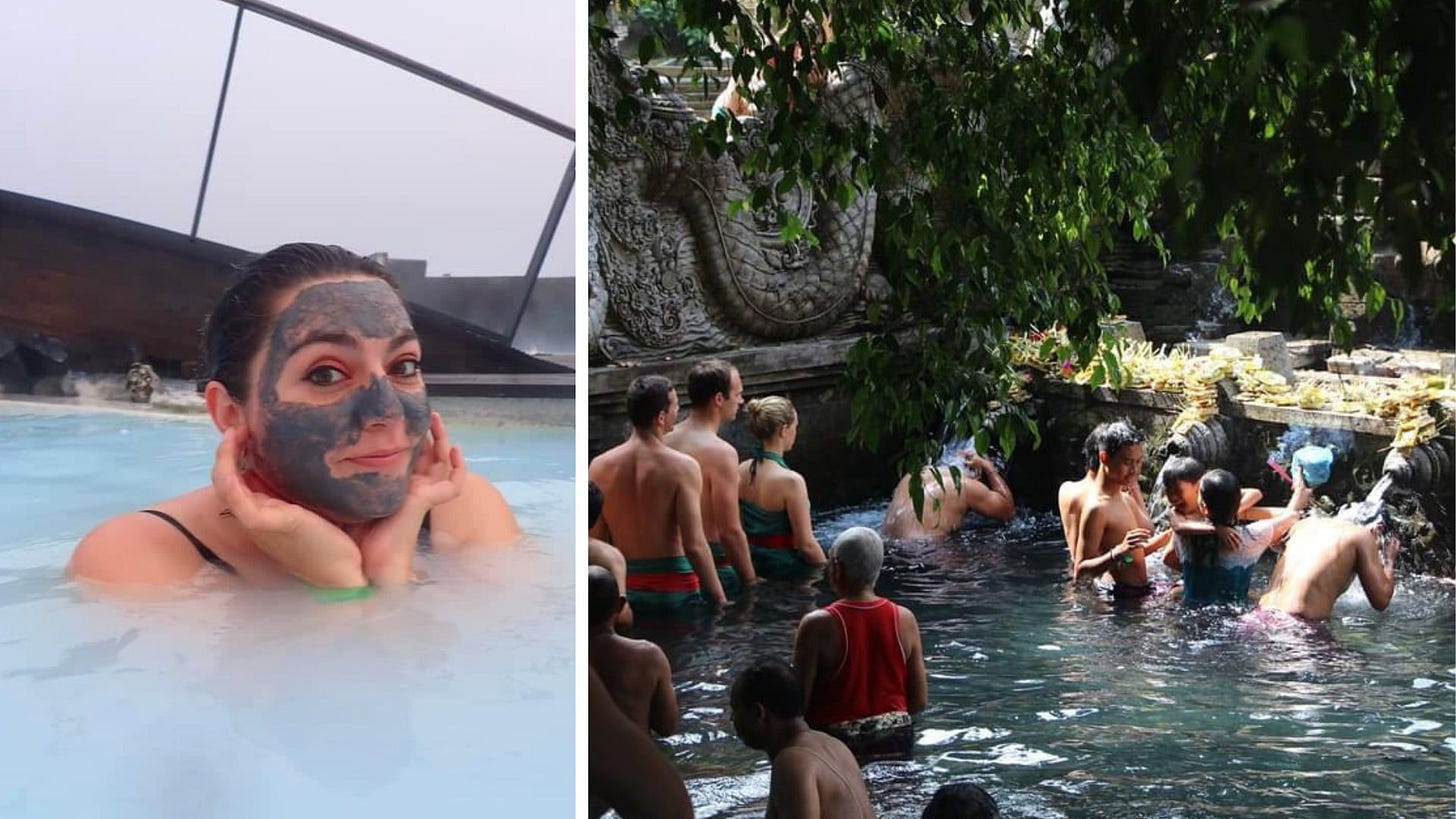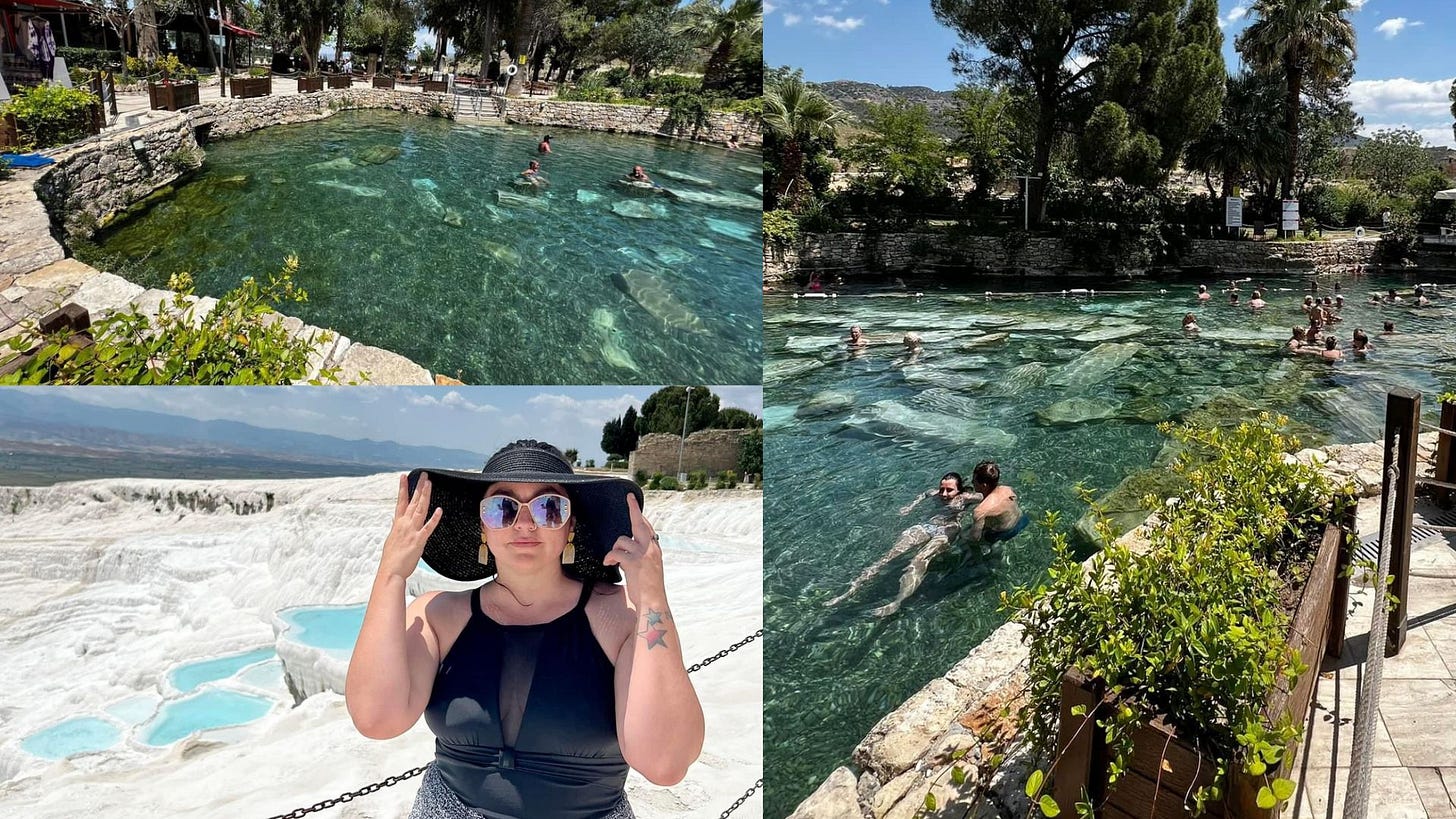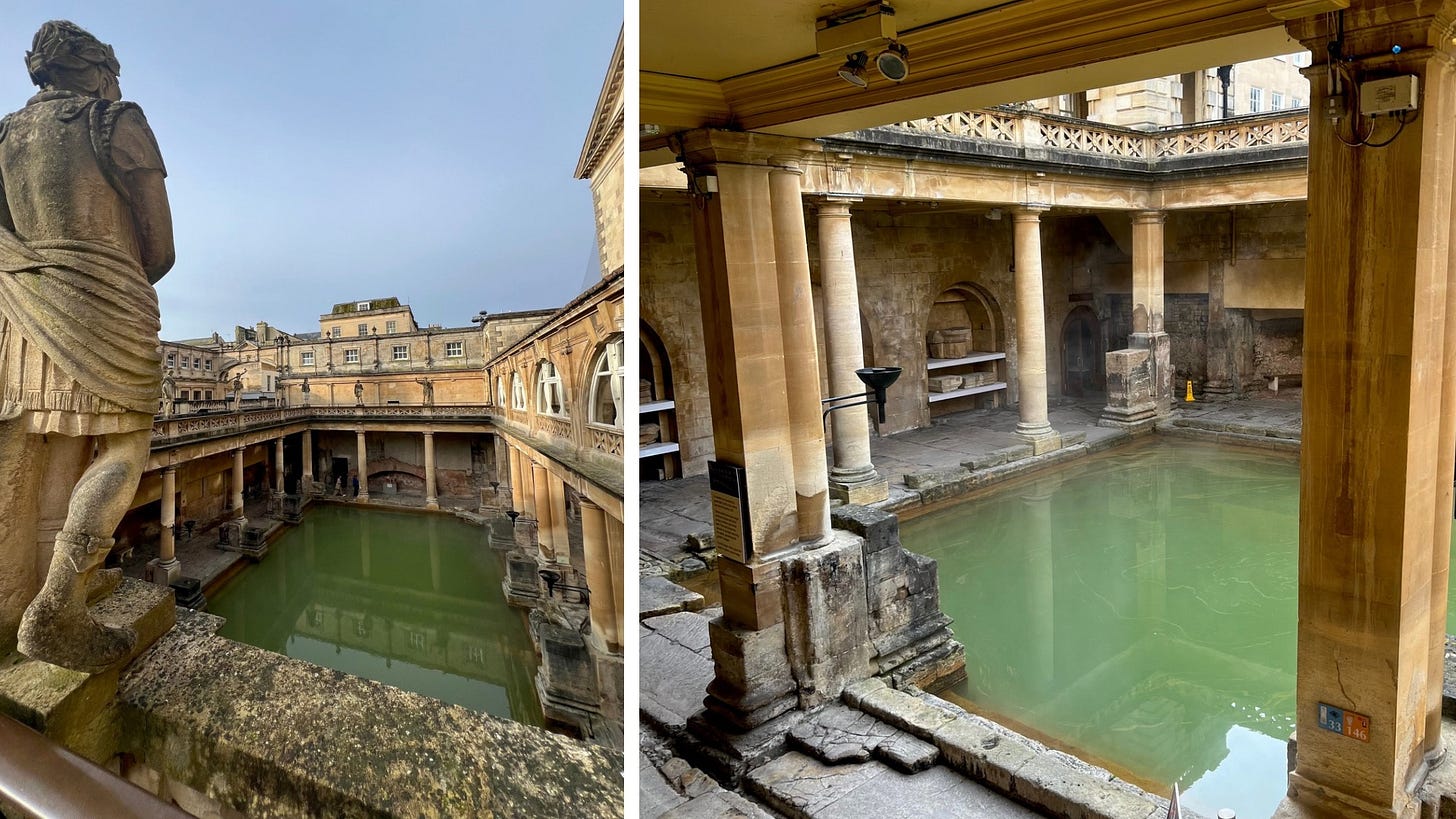It’s the end of June. I’m freezing. Bundled up in my comfiest and thickest sweatpants and hoodie, I can’t seem to warm this goosebump-filled skin. Shivering like it’s not my new normal; living in Scotland where the temperature is currently reading 42°F at 4:00 PM. I’m so cold my body aches. Uncomfortably by the bone-chilling air that is probably the result of some North Sea air merging with the Atlantic current. I don’t know. I’m not smart about these things and even though I want to complain about it, I won’t look it up either.
I want to submerge myself in a thermal hot spring. Somewhere in the Colorado mountains like Ouray, Glenwood Springs, or the “hippie-dip” - a natural pocket in the Crystal River off the highway between Paonia and Redstone. It was a local hotspot for years, kept private from outsiders, but now the secrets out. You’re lucky if you can get in the water, let alone find parking.
My favorite hot springs in Colorado is Orvis. A (mostly) adults-only resort in Ridgeway that sits right off the highway near the Uncompahgre River, with Mount Sneffels in view. A short 45-minute drive from where I grew up. It’s a “clothing-optional” kind of place but I’ve never gone nude. I’m far too modest for that and prefer to go at night when I don’t have to worry about making accidental eye contact with someone’s nipples or bush when all I’m trying to do is look at the beautiful trees, flowers, and rock formations.
I want to be shoulder-deep in the water with every inch of my skin warmed by geothermal bursts. I should be relaxing against the mini waterfall in Orvis’ largest thermal pool. My feet being massaged by those tiny slick pebbles at the bottom. Not having to worry about abnormal river monsters nibbling on my flesh.
God, I wish teleportation existed.
There are no natural hot springs in Scotland. I know because I just Googled it. Well, I’ve searched more than once since moving here - almost two years ago now - but my memory is shit (anymore) and I often hope that I’ve missed something.
I’ve even asked my local friends and colleagues if they know of a secret spot. Some of them don’t quite understand and look at me oddly, asking things like, “Why’d ya want to bathe with strangers, anyway?” You can’t make sense to someone who just doesn’t get it. I’m not bathing so much as I’m soaking my tired bones and aching muscles. Yeah, it’s communal with a bunch of strangers, and I’m sure people are relieving themselves in the process, but it’s about so much more than that, isn’t it?
The history of soaking in geothermal water is vast and varied. Our ancient ancestors were soaking for a multitude of reasons. Historically Buddhist monks did it for purification ritual purposes, the Japanese for healing, and the Germans to treat chronic illness. And you can thank the Ancient Romans for the European spa culture we know today. Hot springs exist on all seven continents but various sites in the United States, Europe, and Asia are among the most well-known.
According to a report done in 2019 by the Global Wellness Institute, it was “estimated 34,860 thermal/mineral springs establishments are operating worldwide, earning $66 billion in revenue.” The report also found that when it comes to soaking “consumers are seeking to connect with nature; experience cultural traditions; and pursue alternative modalities for healing, rehabilitation, and prevention,” which is why the industry has seen a steady rise over the last decade, despite the COVID pandemic.
I’ve (probably) visited a dozen or so of these 34,000+ thermal spring establishments and have had the privilege of soaking in some of the most beautiful waters on the planet: The Blue Lagoon in Iceland that is worth ALL the hype, ancient bathhouses in Istanbul, Banjar Hot Springs in Bali, Chena in Fairbanks, and the Springs Resort in Pagosa Springs, Colorado.
When I was in Turkey for a month-long residency in May 2022, I visited Cleopatra's Antique Pool in the ancient ruined city of Hierapolis in Pamukkale. Just a few hours from Ephesus. Although Cleopatra only swam in these waters once, after (supposedly) being gifted the pool by Marc Anthony, they have long since been revered for their healing properties. I can’t say I benefited from the calcium-laden mineral water, but my skin did feel a bit smoother afterward.
What made this place so unique was swimming and often sitting atop the marble portico columns that had fallen into the pool during an earthquake in the 7th Century AD. An experience I would gladly do again, although I would wear much better water shoes to protect my feet from the sharp corners and slick sides, and maybe consider going at a cooler time of the year.
Recently, I visited Bath in Somerset, England, home of the greatest religious spa of the ancient world. The Ancient Roman Baths were built around 60/70 A.D. and people traveled from afar to worship at the site of the Celtic/Roman goddess Sulis Minerva. Many visitors brought animal sacrifices of sheep, pigs, and cattle to her altar and pleaded with the goddess to curse their enemies. You can view many of these curses, written on flattened iron, excavated from the site. Some of my favorites were about stolen livestock, cursing someone for a wronged look, or damning someone for stealing clothing from the bathhouse.
Through video projection, many of the areas have been brought back to life like the Apodyterium (changing room), the Caldarium (hot room), and the Natatio’s (pools), which show you how each room would have been used during its heyday. It’s easy to imagine what life was like here, then. What it meant for political, religious, or business happenings, or how many friendships thrived. This wasn’t just a place sought by those wanting to be blessed by the goddess, but those who also wanted to be a part of this leisure and social hot spot.
In 1978, the Ancient Roman Baths were closed due to a deadly pathogen found in the water but today, you can walk the original walkways, and take awe of the ruins and artifacts, which I cannot recommend enough.
Although I couldn’t soak in the Roman Bath waters, I did taste it as many visitors are encouraged to do before exiting. I do not recommend this (see the video below), but my visit did make me think a lot about why I often seek such places. Why have we long since enjoyed these types of experiences?
What is it about geothermal water that speaks to us? Are we holding onto some ancient tradition - passed down by our ancestors - that encourages communal soaking? Does relaxing in hot water, completely submerged and often out in nature, truly relax us? Do the natural minerals in hot springs actually improve our skin and overall health? Or is this nothing more than some trendy holistic experience or a tool used to reconnect with our spiritual selves?
I often crave a natural hot spring like someone would crave their favorite dessert or dish. Often out of the blue, it will hit me - - I need to visit the hot springs, like, now! There is something about feeling warm and weightless. My brain quiets. My breath softens. When I’m feeling out of sorts, when life seems too busy or consuming, it’s the one place I can find stillness. And, yeah, I guess I do enjoy being out in nature when I do it but it is really that simple; I soak because I enjoy it for the peace it gifts me. I don’t know. It feels too basic - not definitive enough for something that makes me feel so good, but then again, maybe that’s the beauty of it.
To better contemplate this, I think I need to find a hot place to submerge my cold bones. I need to warm up. I need to soak. Maybe I need to find a way to visit some of my bucket list hot springs: Cascate del Mulino in Italy, Termas Geometricas in Chile, or Takaragawa Onsen in Japan. Maybe then I can come up with a better answer. What do you think?
Why do you soak?









